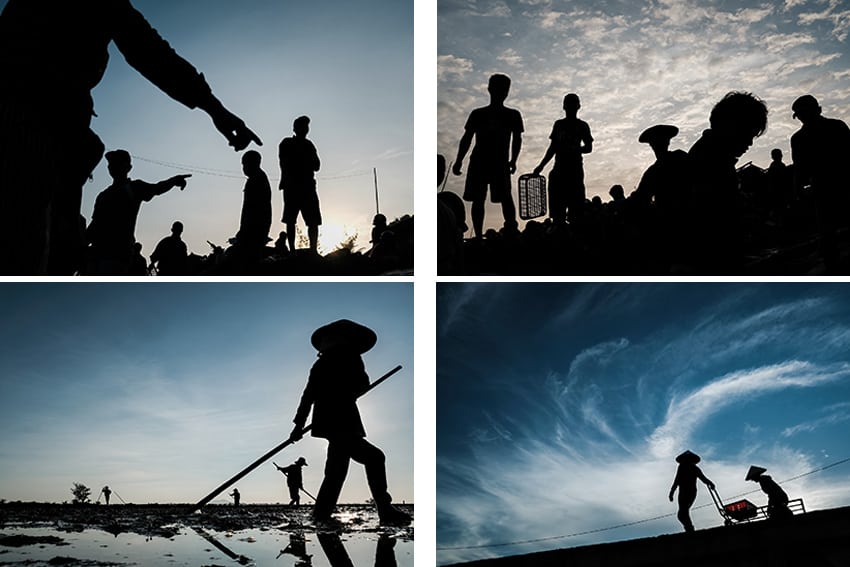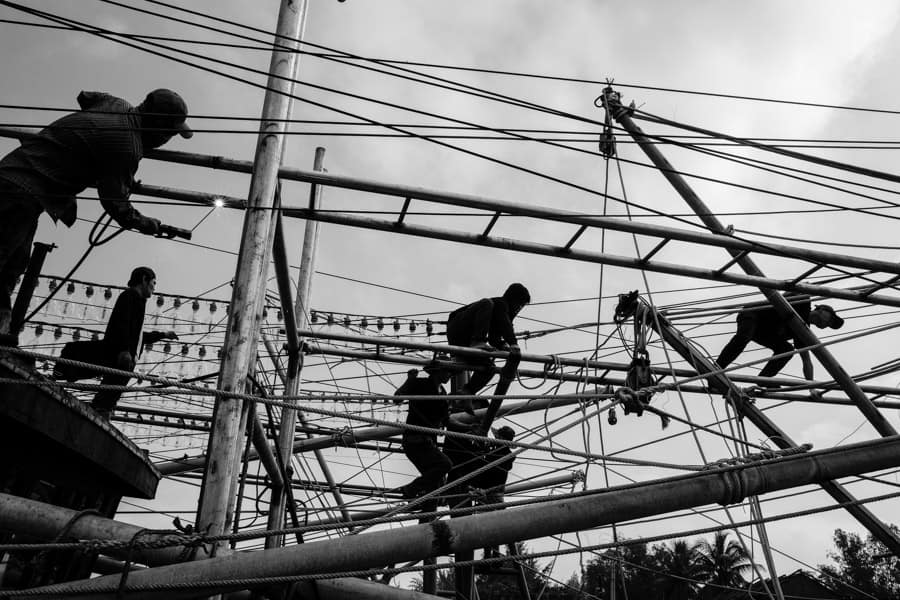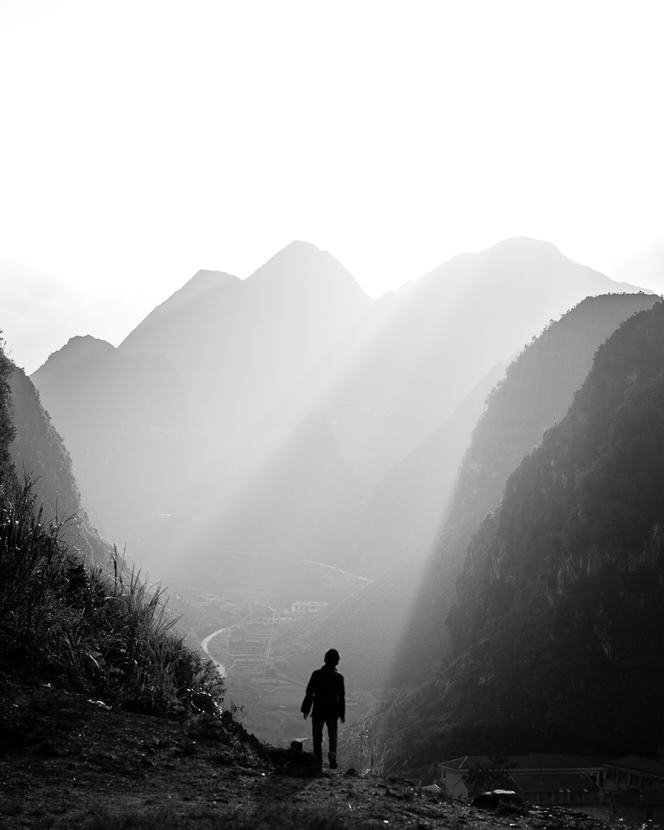Telling stories through silhouettes
How it began
Shapes of Vietnam came about somewhat by accident. It was a few years ago when I switched to a new camera system. And what started as a bit of experimenting with light and shadow, with my new camera’s settings and capabilities, became the seeds of this idea.
Over the past few years, I developed this idea further into the silhouette-centred project it is today: Shapes of Vietnam.

Scenes that struck me
The premise for my project is pretty simple, really. I wanted to capture an entire scene, showing moments of work and rural life exactly as they happened. In all of their beautiful chaos, without getting caught up in any individual’s story.
You see, as a photographer who’s been living and working in Hoi An for over 12 years, I’ve spent a lot of time in the surrounding countryside. Travelling around the hills, villages and rice fields of Central Vietnam, connecting with local people and making pictures from their stories.
The scenes I would witness each day – each hour – stayed with me. But sometimes my views were biased, as I was there to meet with the “subjects” of these scenes. And my resulting photos were somewhat subjective.
So I wanted to find a way of capturing those moments in as objective a way as possible. Which led me to use silhouettes more frequently… and which later developed into this project.

Changing the story
The thing I love about silhouettes is that they’re impersonal. Of course, photography can be an incredibly personal thing – and a subject’s story/emotions can be told particularly well in say, portrait photography.
But when we use silhouettes, when we remove a person’s identity from the scene, we tell a different story entirely.
Suddenly the image isn’t a picture of this man or that woman – but a representation of Vietnamese people living in a rural area. A snapshot of the conditions surrounding them and their way of life. Not a story of the individual but of the collective, of Vietnamese people as a whole. Of the human condition, even.
For me, this is an important transformation. Because by using silhouettes, we can avoid clichéd imagery – depicting rural life through the emotions on people’s faces. Instead, we can present the scene exactly as it happened, without getting tied up in its influence on the characters.

Leading the eye
The idea behind Shapes of Vietnam is to compose interesting images based on lines, shapes, and moments.
It involves directing viewers’ attention in a slightly different way. So viewers aren’t caught up in examining the characters’ faces – rather, their eyes can flow more freely through the frame.
In this project, silhouettes, lines and shapes lead the eye, while the moment tells the story. I find these types of compositions very interesting and beautiful – but maybe that’s just me!

Capturing chaos
The difficulty in shooting a typical busy Vietnamese scene – at least, one that involves characters – is that it can be hard to separate the subject from the madness. Of course, you can find a clean background, get closer and use foreground objects to block out some of the mess… but then you shut out most of the exciting scene beyond.
Which can be a shame, as Vietnam is all about charming chaos!
Thanks to silhouettes, it’s possible to translate how busy and chaotic Central Vietnam can be – in a much cleaner way. We can create complex compositions that include all the actors of a scene, telling their story in a single moment which viewers “get”, instantly.
This creates a better picture of Vietnamese rural life – where people often gather to work together – rather than singling anyone out.
Silhouette photos can show the chaos of the scene in a very sharp and dynamic way. But in fact, they can also represent the peacefulness, even the sometimes melancholy feeling, of the vast countryside.

Evoking emotion
Finally, onto the emotions, we can share with silhouettes.
As with so many things in life, less is often more. So rather than hammering home the emotion of a scene to viewers, I prefer to pare things right back. To simplify the image into its more basic elements. Because often a stark, lonely silhouette can tell a much more evocative story than a portrait.
Since beginning my silhouette project a few years back, I’ve come to learn this fact. That we can convey more emotion with less fuss. That the purity of the image lies in the simplicity of its shapes.
And capturing the purity, the emotions and the stories behind Vietnamese people?

That’s what Shapes of Vietnam is all about.

Beautiful! I love your new posts and new image, as well as the enduring, wondrous images of View Nam.
Thanks a lot Sandra, I hope to meet you again in Asia!
Hello,
Great pictures. Would appreciate knowing the camera you used and lenses.
As I keep bragging around on this website, I am a fuji shooter, and most photos here were taken with the 23mm lens.